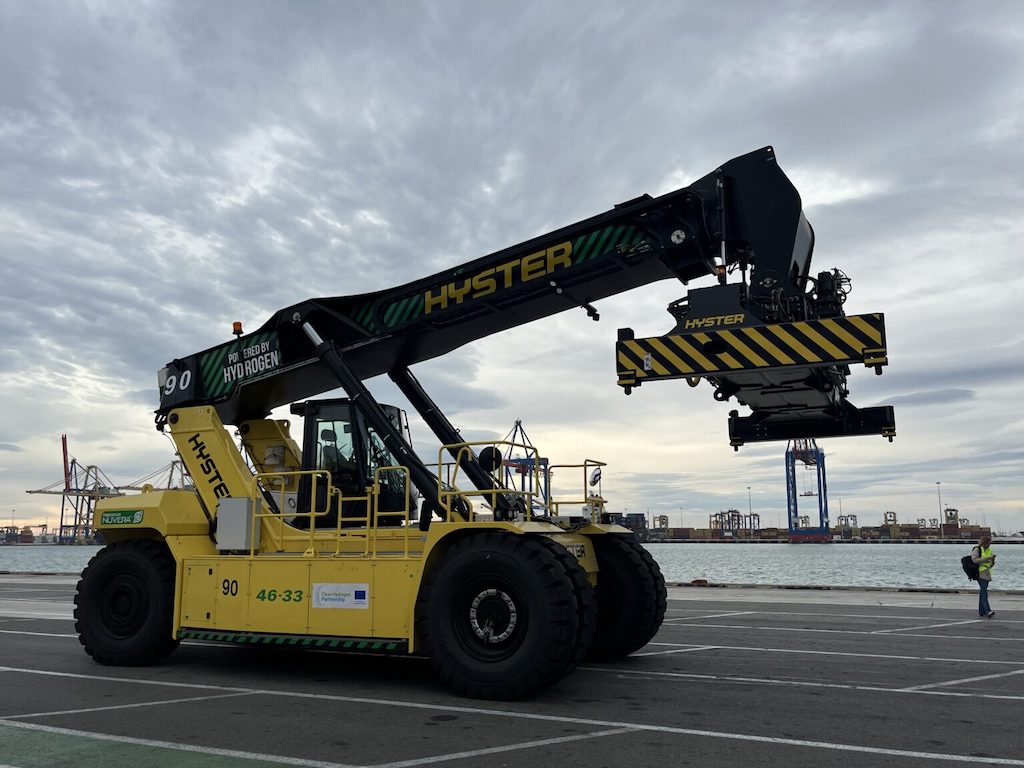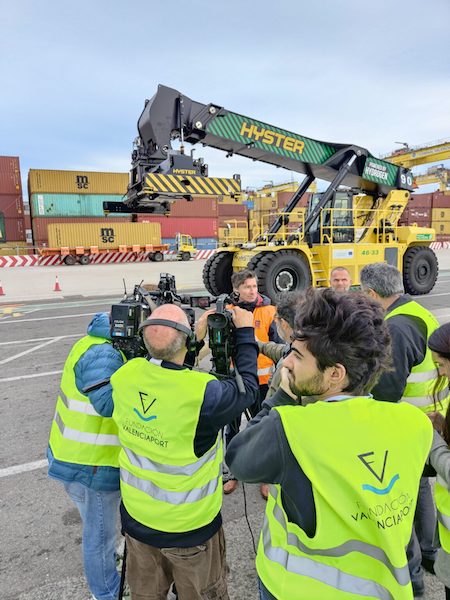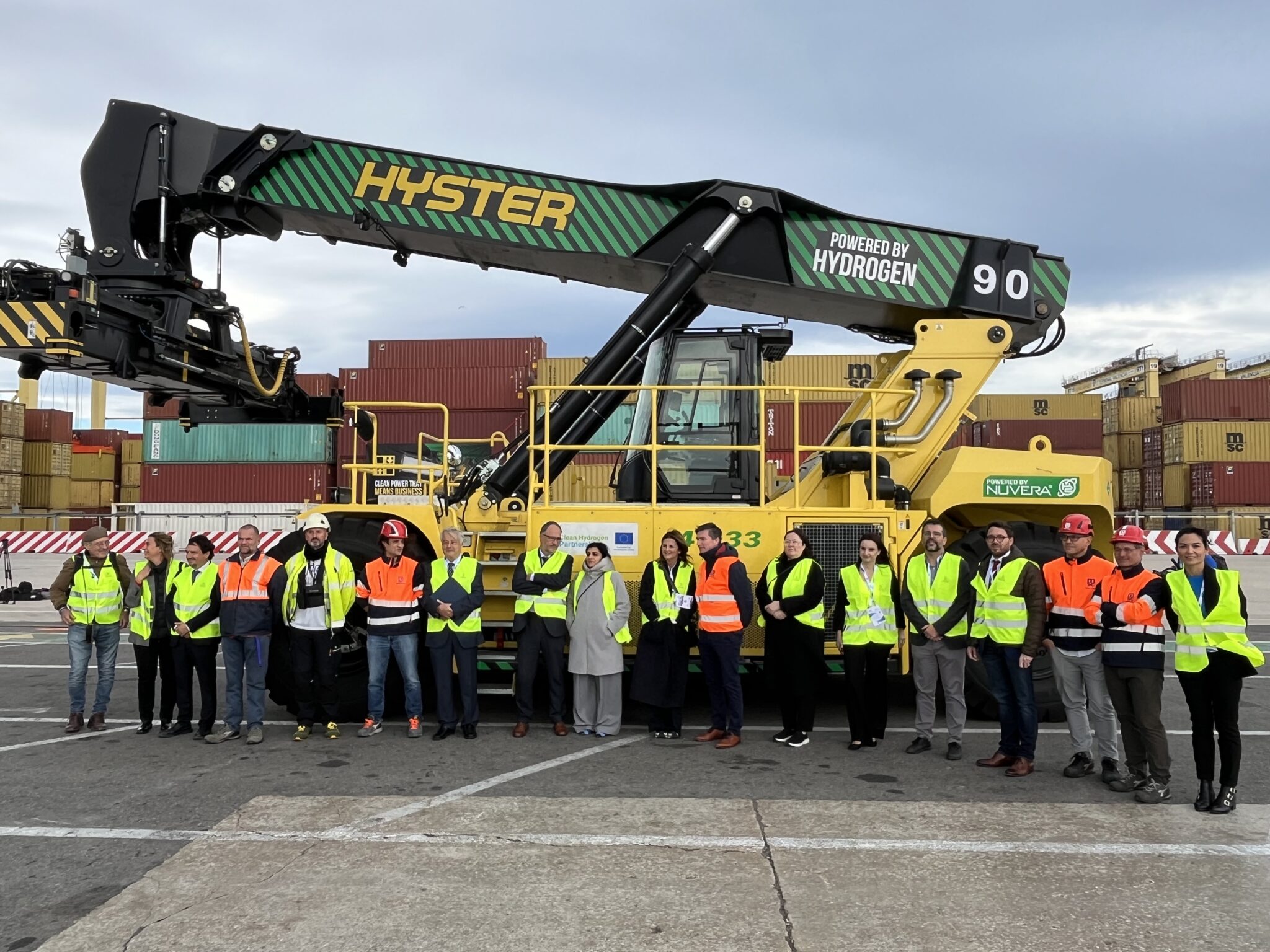The Port of Valencia has made history as the first port worldwide to deploy a hydrogen-powered ReachStacker, marking a significant leap in sustainable port operations. This groundbreaking achievement is part of the European H2PORTS project, spearheaded by the Fundación Valenciaport. The initiative aims to validate and test hydrogen technologies on port machinery, with a focus on practical solutions that enhance performance without compromising safety or operational efficiency.
A public demonstration showcased three key components of the H2PORTS project: the hydrogen-powered ReachStacker, a 4×4 hydrogen-powered tractor unit, and a mobile supply station. The ReachStacker, developed by Hyster, represents a state-of-the-art, zero-emission solution. Powered by a hydrogen fuel cell from manufacturer Nuvera, the ReachStacker converts hydrogen into electricity, offering a sustainable alternative for the port’s cargo handling equipment.

The demonstration event unfolded in the auditorium of the Port Authority of Valencia (PAV) and extended to key terminals, including MSCTV terminal and Valencia Terminal Europa (VALTE), operated by the Grimaldi Group. The audience had the opportunity to witness the hydrogen-powered machinery in action, including a prototype ReachStacker showcased at the MSCTV container terminal. Notably, this ReachStacker is the first of its kind in Europe to employ hydrogen fuel cell technologies for port handling equipment under real operating conditions.
The ReachStacker boasts a working radius of up to 54m and a maximum capacity of 125t, catering to container ships up to Panamax class. With hydrogen stored in high-pressure tanks on board, refueling takes a mere 10-15 minutes. The fuel cell powers electric motors, significantly reducing greenhouse gas emissions and noise pollution compared to traditional diesel alternatives while maintaining similar performance levels.
The second highlight of the demonstration was the hydrogen-powered terminal tractor at the VALTE terminal. Developed by ATENA with support from ENEA and the Parthenope University of Naples, this terminal tractor showcased its autonomy, reliability, and power by hitching up a truck trailer and navigating the terminal. The tractor features a fuel cell/battery hybrid powertrain, allowing it to perform intensive tasks during roll-on/roll-off operations. The hydrogen storage system, with a capacity of around 12 kg, ensures continuous operation for at least 6 hours before refueling.

The third element of the demonstration was the hydrogen station developed by the Spanish National Hydrogen Centre (CNH2), shedding light on the hydrogen supply and refueling management carried out by Carburos Metálicos. Experts from CNH2 and Carburos Metálicos elaborated on the hydrogen refueling operation for the ReachStacker, highlighting the successful optimization tasks and adherence to safety protocols.
Francesc Sánchez, director of the PAV, emphasized the significance of this project in Valenciaport’s commitment to decarbonization and the adoption of alternative energies. Federico Torres, head of Energy Transition at Valenciaport, shared insights into the diverse projects, including electrical substations, photovoltaic, hydrogen, wave, and wind power, contributing to the port’s goal of 100% alternative energy use.
In conclusion, the H2PORTS project, backed by a total investment of 4 million euros, showcases the Port of Valencia’s leadership in incorporating hydrogen technologies to minimize the environmental impact of its operations. The successful implementation of hydrogen-powered port machinery reinforces Valencia’s position as a global benchmark for sustainability, innovation, and efficiency in port operations.







